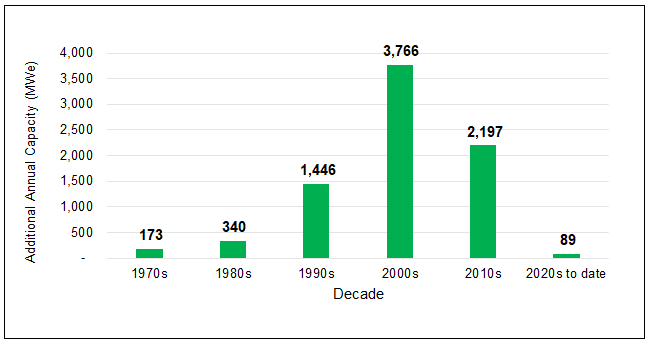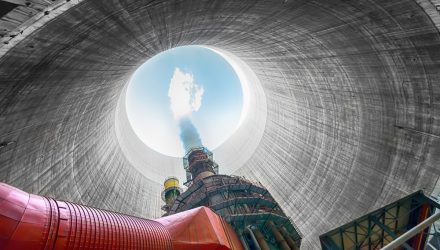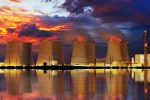Nuclear power is getting a new look as more and more people begin to believe that pivoting to renewable energy will require leaning on nuclear power. Other clean energy sources lack the sheer power-producing might of uranium. Nuclear technology is also advancing, with research and development on small modular nuclear reactors (SMRs) generating interest globally.
In a new special uranium report from Sprott, Per Jander notes that though the new tech gets a lot of attention, the real substantial change in nuclear efficiency is in power uprates and life extensions. SMRs are at least a decade away from contributing meaningful carbon-free power. Taking steps to extend the life of current plants and power uprates, however, can go a long way toward having an immediate impact. Jander notes that “Life extension and uprate technologies provide immediate solutions to maintaining and increasing power capacity in existing reactors.”

Source: IAEA
Nine Mile Point nuclear station recently did a capacity uprate that added 173 MWe2 to its output. That’s enough energy to power 80,000 households in New England for one year.
Reactors Are Aging
Jander notes that “Most of today’s working reactors were built in the 1970s, 1980s, and 1990s. That puts them past or near the end of their original 40-year operating licenses. It’s important to note that the original 40-year operating licenses in the U.S. were conservative. Existing infrastructure and components can last several decades longer when properly maintained.” Nearly every nuclear power plant component can be replaced quite inexpensively. This improves the output of the plant and extends its ability to function for many more decades. Upgrades and life extensions are financially sound for plants as well, as the economics of nuclear power are about the depreciation of capital investments and initial contraction, due to the small cost of fuel. Additional decades of life can maximize the value of the initial investment.
They have the added benefit of sidestepping the usual political debates that come with new nuclear projects. It is easier to get new components for an existing plant than to break ground on a new one. Power uprates that result from replacing parts can substantially increase capacity, sometimes as much as 10%.
Jander’s report says, “From the 1970s to the end of 2021, U.S. nuclear power capacity increased by 8,000 MWe because of uprates (see Figure 5). This is nearly equivalent to adding eight new nuclear reactors, given that new reactors are being built to 1,000-1,100 MWe capacity. The value is even higher when we factor in the political ‘investment’ and licensing costs required to bring a new nuclear reactor to life. It’s far more efficient to boost capacity through uprates. Uprates are also extremely cost effective. The average uprate is estimated to cost approximately $250-$500 million, while each new 1,100 MWe plant costs between $6-9 billion.”

Source: Nuclear Energy Institute
The U.S. Infrastructure Bill has $6 billion earmarked for extending the life of existing nuclear power plants. Additionally, proposed global carbon credit systems could transform nuclear power stations into absolute gold mines overnight. All of this is expected to drive continued demand for uranium, which makes a compelling pitch to invest in the Sprott Physical Uranium Trust.
For more news, information, and strategy, visit the Gold & Silver Investing Channel.








